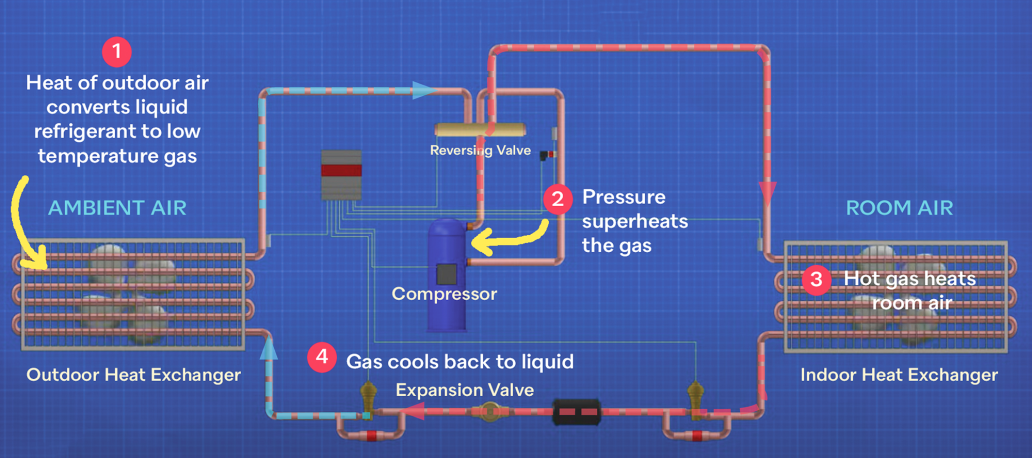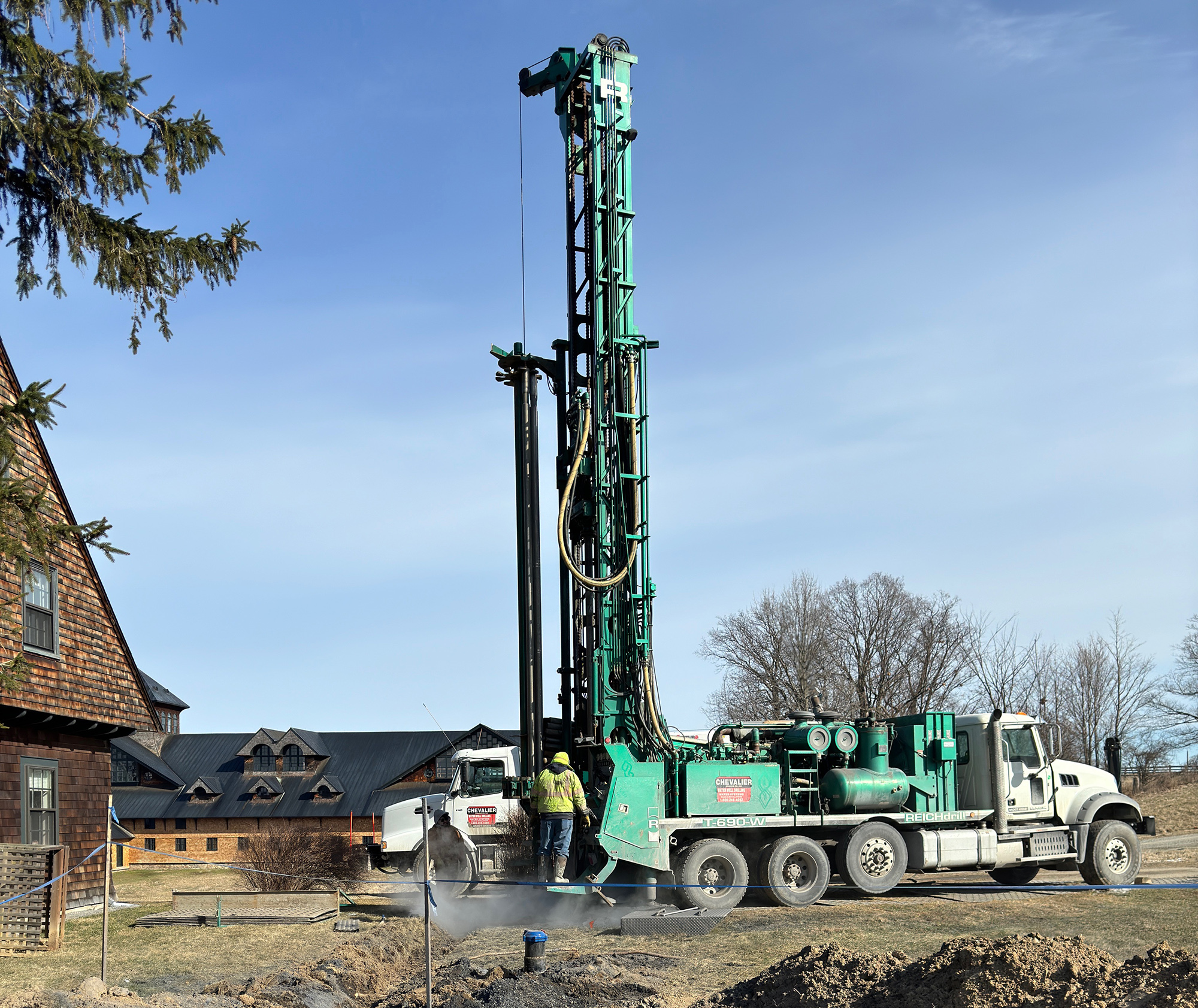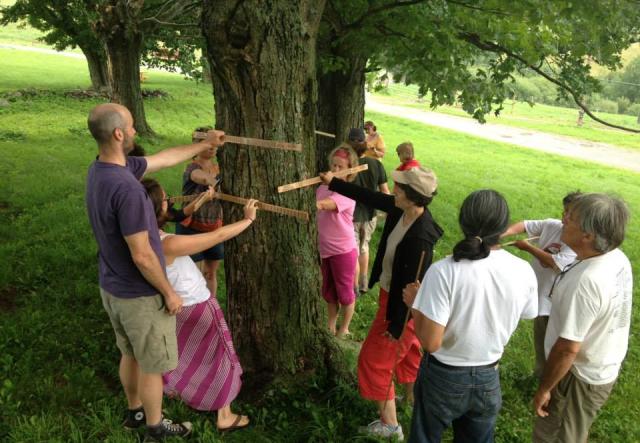Thanks so much, Holly. This blog entry inspires me to circle back to seriously considering geothermal for my home. I have some questions; I don't know if they belong in this public forum or in a personal email exchange, but here goes: 1. What's the square footage of the cottage? 2. How would you rate its insulation level: fair, good, excellent? 3. How many wells, and how deep does the system need? 4. How far afield did you have to go to find a contractor? 5. If you are comfortable naming the company, who are you working with? Many thanks! Looking forward to learning from you.
Pumped for Heat Pumps: A Climate Solution
This isn’t a blog to help you decide whether to invest in heat pumps, but it will explain why and how Shelburne Farms has.
Buildings account for 26% of global energy-related emissions of greenhouse gases, according to the International Energy Agency. That's mostly to heat, cool, and power them. Clearly, how we maintain temperatures in buildings is a lever for climate action.
Enter heat pumps.
WHAT ARE HEAT PUMPS?
Heat pumps are simply a technology used for heating and cooling homes, and for heating hot water.
WHY ARE HEAT PUMPS A CLIMATE SOLUTION?
Heat pumps are 50-70% more energy efficient than comparable home heating systems, according to the International Ground Source Heat Pump Association. They're also powered by electricity rather than by burning fossil fuels like propane or natural gas. In Vermont, our electricity is largely generated carbon-free, so switching to heat pumps can help combat climate change. (That’s not to say carbon-free electricity sources don't have other environmental costs.)
So with 30+ buildings to heat across our campus, we identified heat pumps as a priority in our Climate Action Plan to achieve Net Zero by 2028. Over the past several years, we’ve continued to invest in them for both home heating and hot water systems.

HOW DO HEAT PUMPS WORK?
Essentially, heat pumps operate like your refrigerator or air conditioner: they move heat from where it is to where it ain't. They tap into two physical laws: Heat flows from warm things to cooler things, and heat turns a liquid into a gas. There are two kinds of heat pumps: air-source (the ones you might see beside your neighbor’s house), and ground-source, or geothermal. We’re using both on our campus.

How a heat pump works
Air-source heat pumps can be a climate-conscious technology, but in colder regions, they struggle to extract the heat from ambient winter air to adequately warm homes. This means they work best with a backup heating system or in a well-insulated building.
Ground-source heat pumps (also called “geothermal”) avoid this problem. Their heat source isn’t the air, but the earth.
ABOUT GROUND-SOURCE (GEOTHERMAL) HEAT PUMPS
(A quick note on “geothermal.” The term comes from the Greek: geo means earth, and therme means heat. If you’re imagining geysers in Yellowstone or hot springs in Iceland, you’re not wrong. In our regional context, however, geothermal simply means the heat that radiates from the center of the earth outward.)
Through Vermont’s summer heat waves and winter cold snaps, the ground temperature a few feet below the earth's frost zone remains relatively constant: around 55°F. To tap this heat and raise it to a comfortable room temperature takes a lot less work than pulling heat from frigid ambient air.
Ground-source heat pumps circulate a solution of water and antifreeze (in our case, nontoxic) around a network of buried pipes. The pipes can be arranged either fairly shallowly over an expanse of ground or drilled upright deep into the ground. The water solution absorbs the ground’s heat, then exchanges its heat with a liquid refrigerant above ground. The rest of the system works like an air-source heat pump. The antifreeze solution continuously absorbs and releases the ground’s heat.
Here at the farm, we’re installing our first geothermal system to heat and cool Vineyard Cottage. The drilling of vertical pipes is a significant upfront cost, but the longevity of the below-ground system could be near 50 years. (The above-ground components of any heat pump have closer to a 20-year life expectancy.)

Installing heat pumps across our campus has been–and will continue to be–a learning experience. In several cases, we’ve had to upgrade the electrical service coming into a building ahead of the pump installation. In some older buildings, cramped floor space or basements have required modified setups. And in any building, figuring out where to install ductwork for upstairs heating/cooling is a challenge.
As for the climate returns, here are a few numbers: The heat pumps at Windmill House (one of our program residences), replaced about 1,800 gallons of heating oil, saving about 20 tons of carbon per year. According to the EPA, that’s as much as one American “emits” in one year. At Orchard Cove House (another residence for program participants), we’re now saving about 15 tons of carbon annually from the switchover. It adds up for sure.
Heat pumps aren’t a silver bullet in responding to climate change. But they are one place to start. So we’ve started. Let us know if you have, too, in the comments.
More Climate Actions at Shelburne Farms
Comments
Someone on staff will follow up with you privately to answer your great questions, Elizabeth!


